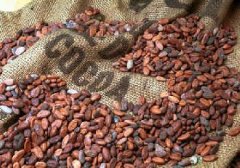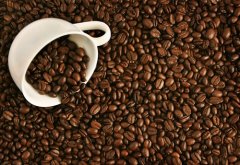Coffee bean baking common sense science is quietly integrated into art

What people think is the most important "artistic sense" and "sensory judgment" are gradually replaced by "science" and "tools". In other words, the "memory" on which people were originally based on baking was gradually replaced by objective, collective "data" and "charts".
The evolution of baking described in the previous paragraph has been created by the invention of many tools and control instruments. The first is a simple device that can be flanked to an approximate internal coffee bean temperature, often referred to as a "thermocouple thermometer" (Thermocouples) or "temperature probe" (Heat probe). This is an electronic thermometer whose sensing tip can be placed inside the baking chamber and buried in the rolling coffee bean heap. Although the air temperature (Air temperature) in the baking room is different from the coffee bean temperature (Bean temperature), the coffee bean stack seems to be able to completely isolate the air temperature in the baking room, so the temperature measured by the probe will not be affected by the air temperature in the baking room. The approximate coffee bean stack temperature value is transmitted to the display outside the bean dryer.
Once the chemical reaction of the coffee bean begins (that is, the "pyrolysis", that is, the first explosion), the temperature of the coffee bean pile on both sides becomes more and more valuable, allowing the roaster to clearly judge the current baking depth. you can probably imagine this picture: when the turkey is almost cooked, the small thermometer inserted in the muscle will pop up. Similarly, the temperature of the coffee bean pile we measured can also reveal the extent to which the coffee beans are roasted at the moment. Therefore, the thermometer can replace the human eye, allowing the baker to decide when to drop the bean according to the "temperature" rather than the "visual coloring", or to adjust the temperature of the baking room according to the temperature value read. You can also refer to a general chart of "coffee bean roasting temperature / baking depth" on pages 80-81 of this book. On these state-of-the-art bean roasters, there are even tools that automatically start the cooling program when coffee beans reach a set baking temperature.
The second important control instrument combines the invention of the internal temperature monitoring of the baking chamber and the supply of the heat source to automatically monitor the supply of the heat source so that the temperature in the baking chamber is always at the predicted temperature value. This invention is not always in line with the actual needs, because when the coffee beans reach the time of pyrolysis, they will begin to emit heat on their own, and if the external heat source still maintains the original firepower at this time, the heat emitted by the coffee beans will instantly increase the temperature of the baking room, and sometimes it may reach the temperature point of the beans at once. According to the rule of thumb of baking, this uncontrollable sudden rise in temperature can lead to prematurely reaching the temperature point of the lower bean, burning too much aroma, and creating a decline in the structure of coffee beans.
The third instrument is the near Infrared Spectrophotometer (Near-Infrared Spectrophotometer), which is collectively known as "Agtron", named after the inventor of the benevolent instrument and the name of the company. It can measure a certain wavelength color or electromagnetic wave that is invisible to the human eye, which accurately corresponds to the roasting depth of coffee beans. In addition, the instrument is not affected by light or shade, nor is it dragged down by human factors, such as being in a bad mood while talking too much. The near-infrared spectrophotometer can not only accurately and stably measure the energy in that narrow band, but also convert the measured energy into data for reference. In this way, even two bakers who are very far away can compare the differences in the baking process with the data read by this instrument.
The long-standing perception of coffee beans tells us that the denser / higher the moisture content of coffee beans, the longer it takes to achieve a preset baking pattern, while the lighter / lighter dry coffee beans take relatively less time. Today's technological development has combined the bean roaster with precision instruments that can read the coffee bean density. According to the coffee bean density data obtained by this digital system, the roaster temperature and other variables are set before roasting. The traditional coffee bean machine can only be adjusted roughly based on the roaster's past experience of baking a coffee bean.
The last development is the control of convective hot air / gas flow in the baking chamber, which has been very accurately controlled by some of the latest baking equipment. In the traditional drum-type bean dryer, the range of air flow in the baking room can always be adjusted through the control of the "Damper", just like the method of adjusting the convection in the fireplace in European and American families, but the traditional bean dryer is still a rough control of the variable, not quantifiable and precise control.
As a result, today's systematic bean dryer has four to five quantifiable factors that can be controlled by the baker:
1. The moisture content and density of the coffee bean itself.
two。 Baking room temperature.
3. Coffee bean pile temperature.
4. Accurate measurement of the degree of coloration of baked beans (Agtron).
5. Flow control of convective hot air in baking chamber. Only a few models have this kind of control.
Then take into account some of the more careful welcome variables, such as external room temperature, altitude, atmospheric pressure, the baking curve drawn by these four or five quantifiable variables, as well as the roasting process of coffee beans and the timing machine. Use objective measurement data to record, instead of using ear, nose, eye experience to record illegal. With the increasing popularity of computer applications, bakers can easily change the temperature and other factors in the baking room to create other combinations of baking patterns, and even increase or decrease the baking time one second at a time, so that subtle taste differences can be more accurately adjusted. This evolution is called "Profile Roasting". Using digital baking, some old beans or coffee beans with a more hollow taste may add a little more complexity, while coffee beans with more rough edges or higher acidity can also become warmer and sweeter.
Important Notice :
前街咖啡 FrontStreet Coffee has moved to new addredd:
FrontStreet Coffee Address: 315,Donghua East Road,GuangZhou
Tel:020 38364473
- Prev

General knowledge of roasting of coffee beans electrothermal baking technology
Electricity was only used to drive the rollers of traditional drum dryers and blowers and cooling fans at the end of the 19th century, but it was not an effective source of heat for large-scale baking at that time. Any chef knows that the rate at which electricity is converted into heat is much lower than that at which gas is converted into heat; in addition, the price of gas is much cheaper than electricity. Just from here.
- Next

Taste is supreme: we won't know until we taste it.
Maybe you are very patient to follow the steps mentioned above, or maybe you simply skip the direct operation. No matter which of the two you are, you will find that the application of these instruments can evolve from the baking method that relies entirely on the baker's own intuitive system (memory and sensory nerve conduction) to more complex but more accurate data.
Related
- Beginners will see the "Coffee pull flower" guide!
- What is the difference between ice blog purified milk and ordinary milk coffee?
- Why is the Philippines the largest producer of crops in Liberia?
- For coffee extraction, should the fine powder be retained?
- How does extracted espresso fill pressed powder? How much strength does it take to press the powder?
- How to make jasmine cold extract coffee? Is the jasmine + latte good?
- Will this little toy really make the coffee taste better? How does Lily Drip affect coffee extraction?
- Will the action of slapping the filter cup also affect coffee extraction?
- What's the difference between powder-to-water ratio and powder-to-liquid ratio?
- What is the Ethiopian local species? What does it have to do with Heirloom native species?

